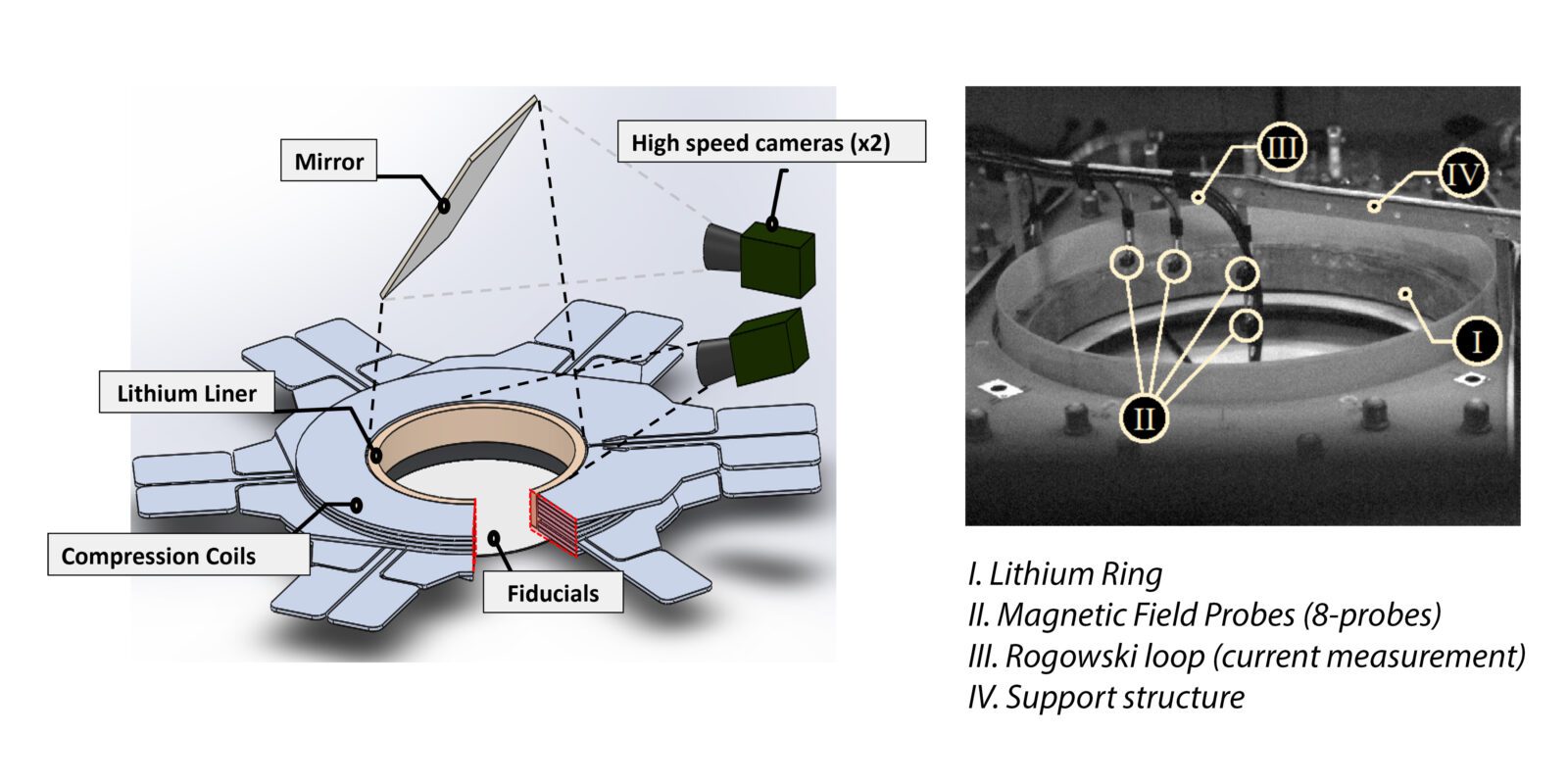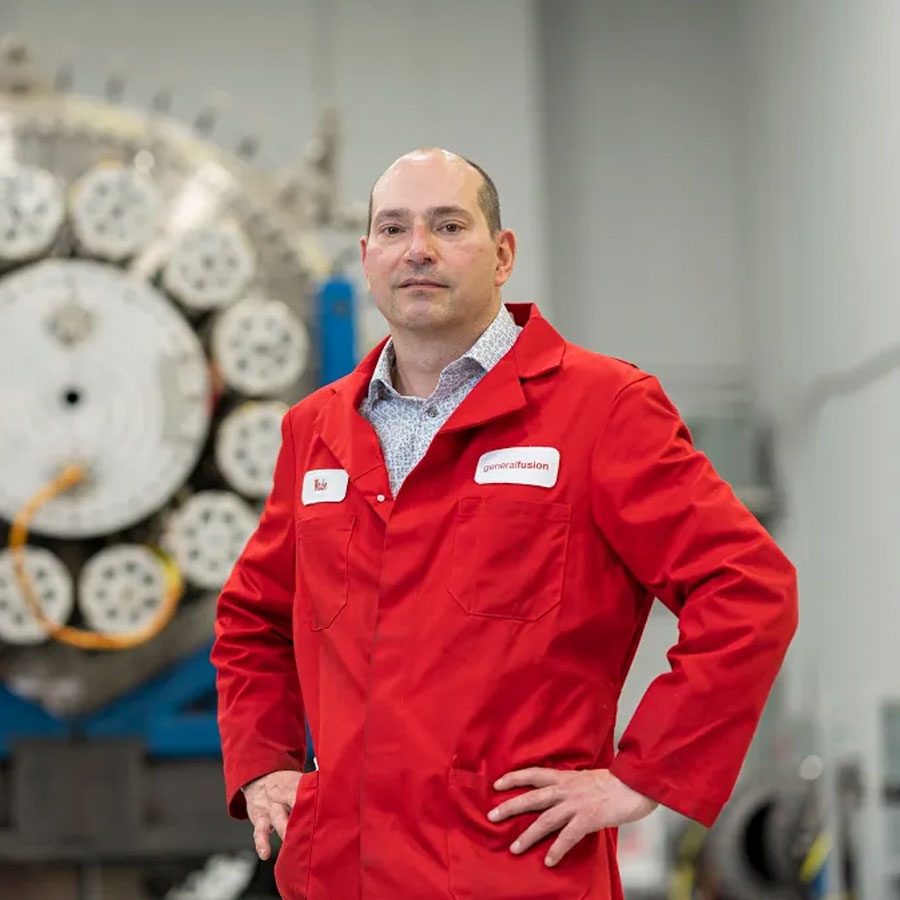Abstract
To achieve commercially relevant fusion conditions in a magnetized plasma, rapid and efficient heating must surpass heat loss. In Magnetized Target Fusion (MTF) experiments, which heat plasma by compression, a magnetic flux conserver made of metal is essential for plasma confinement, and an understanding of the compression trajectory of this plasma liner is crucial to the design and operation of the machine.
In this work, lithium rings, 527 mm in diameter and 55 mm in height, were produced by centrifugal casting and electromagnetically compressed using a high voltage power supply with capacitor energy ranging from 100 kJ to 250 kJ. High speed cameras were used to track the trajectories of the inner and outer edges of the top surface of the ring, as well as its inner edge at the equator. Magnetic field sensors were positioned at a number of radial locations to measure the change in magnetic flux density during ring compression. Ring parameters, such as thickness and temperature, were explored to attain symmetric compression trajectories free of buckles.
A 2D-axisymmetric numerical model was developed using the ANSYS LS-DYNA software package to predict compression trajectories and evaluate the energy efficiency of the compression. The aim of this work is to assess the use of concentric coil electromagnetic compression, also known as a theta-pinch, in magnetized target fusion using a solid lithium liner and to validate the LS-DYNA model. Close agreement between simulation and experiment was observed. This research contributes to advancing Magnetized Target Fusion technologies, with implications for future fusion energy applications.
Jean-Sebastien Dick, Nick Sirmas, Scott Bernard, Lemuel Santos, Piotr Forysinski. Accepted submission to the ASME 2024 Pressure Vessels & Piping Conference.

